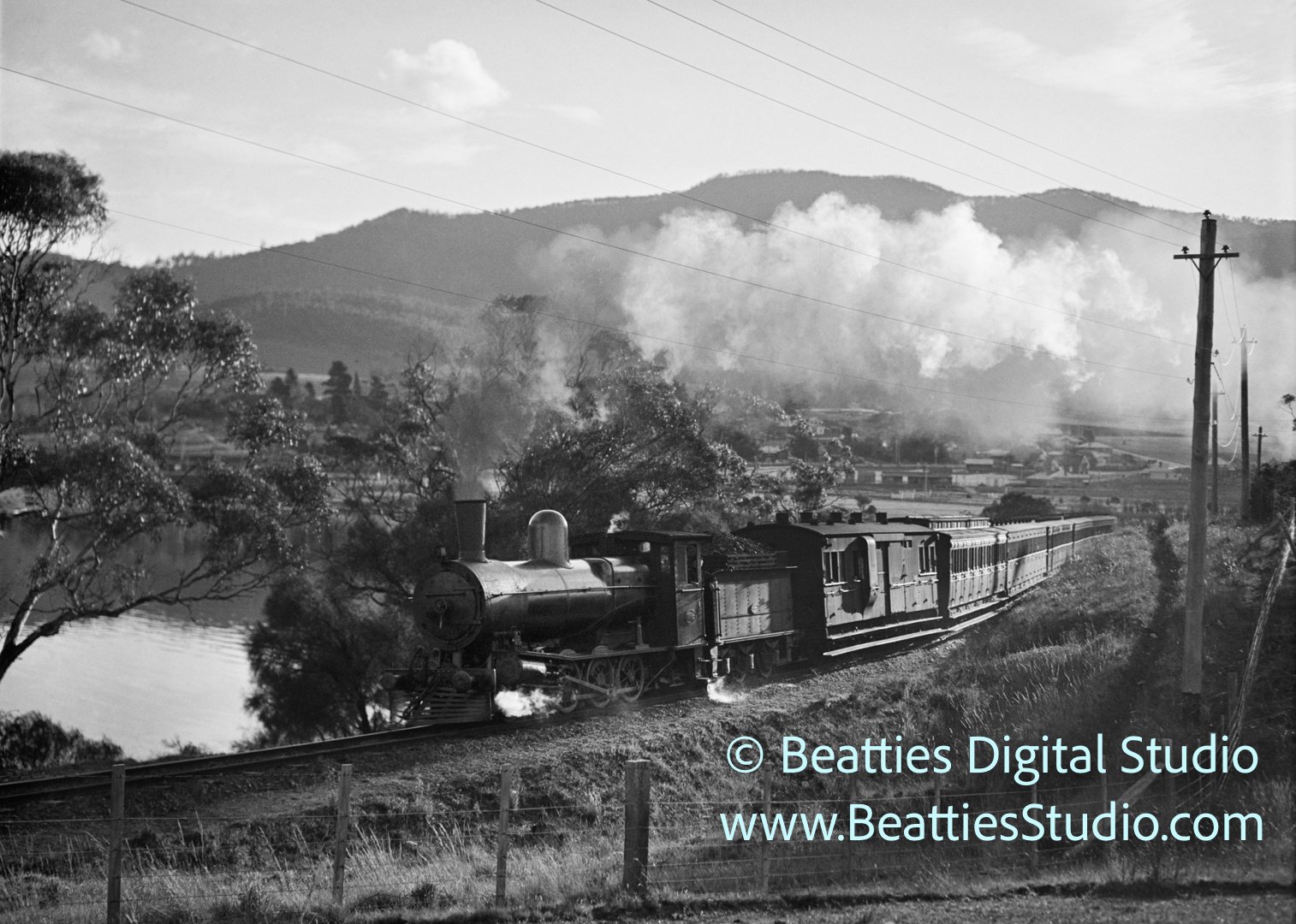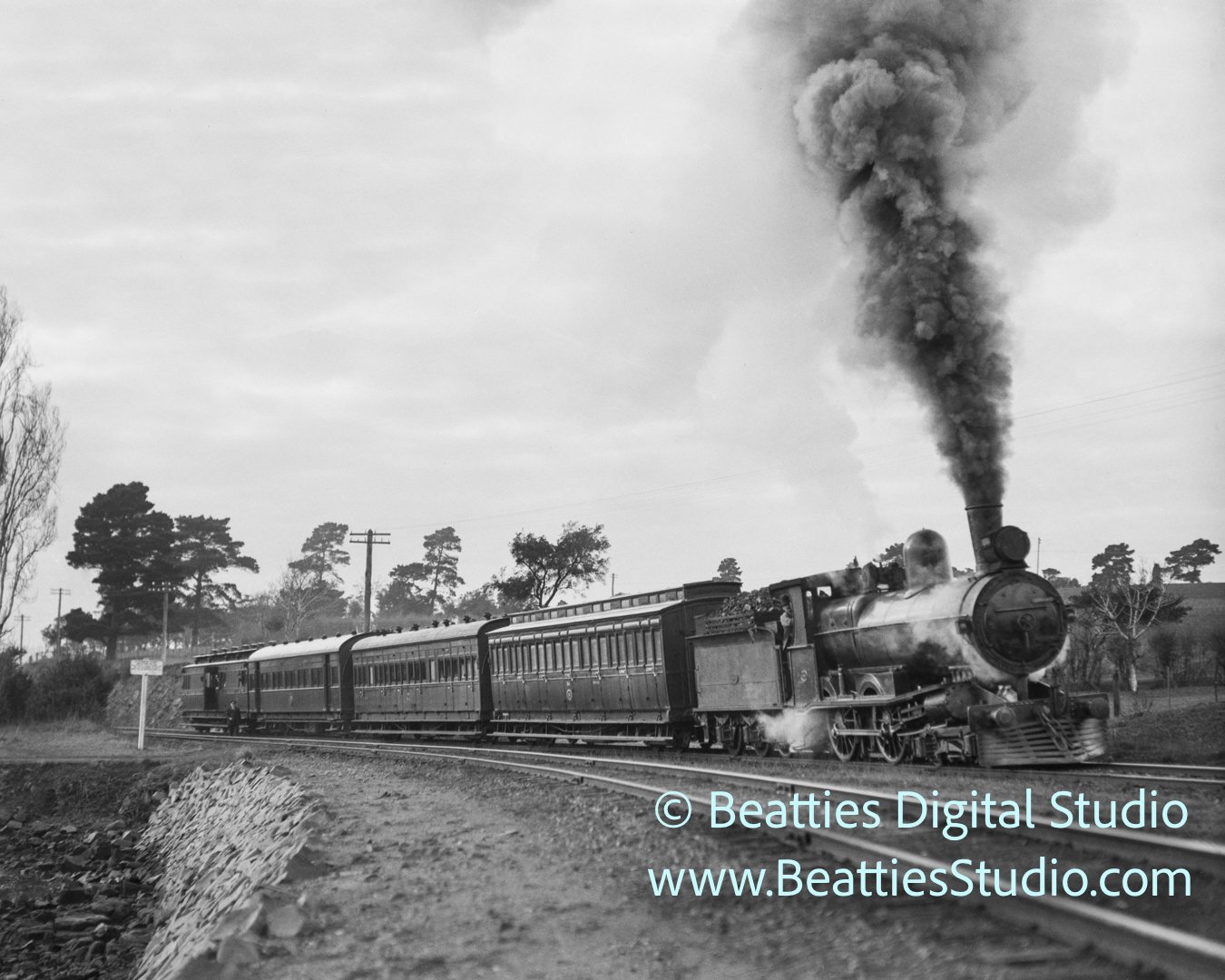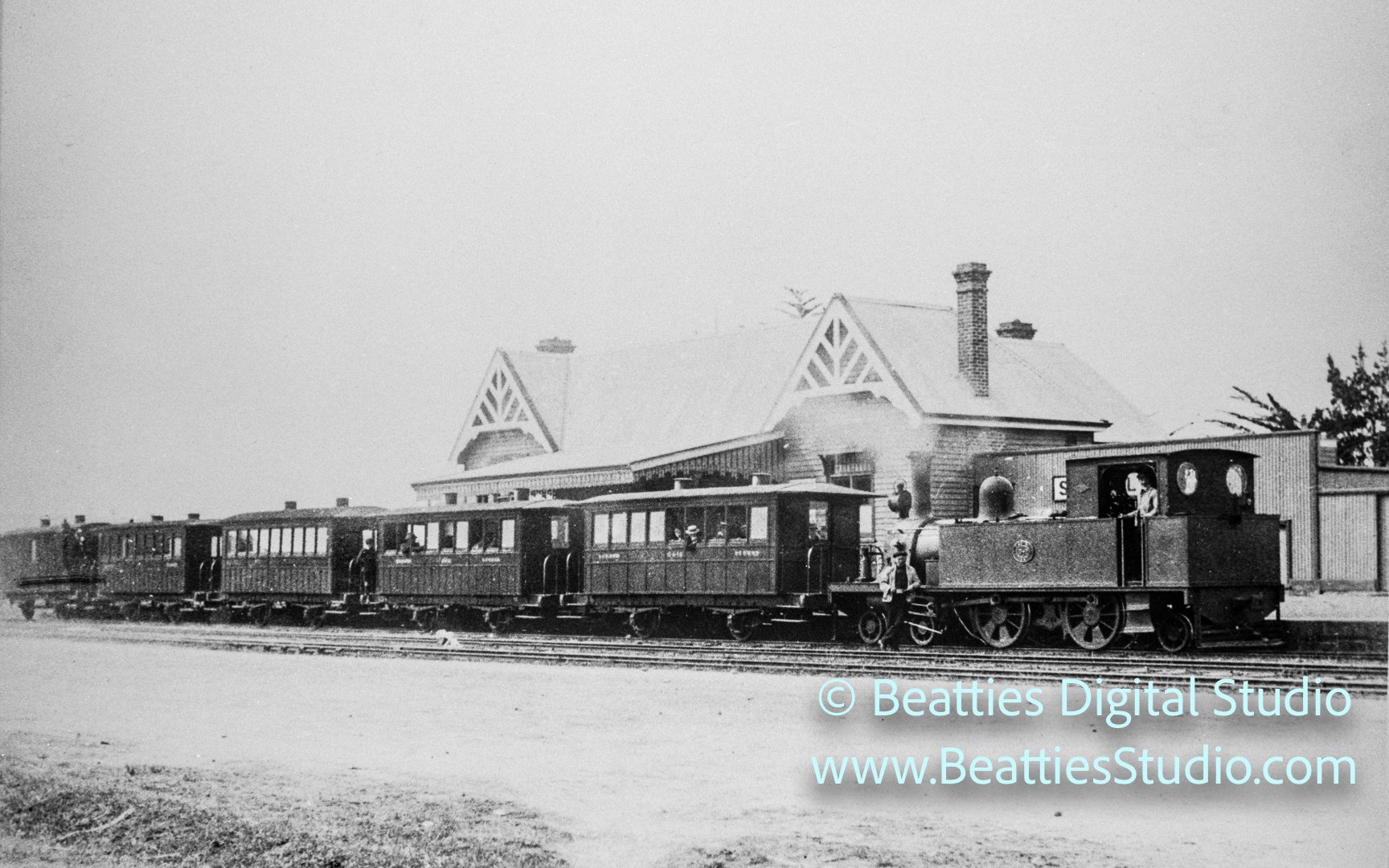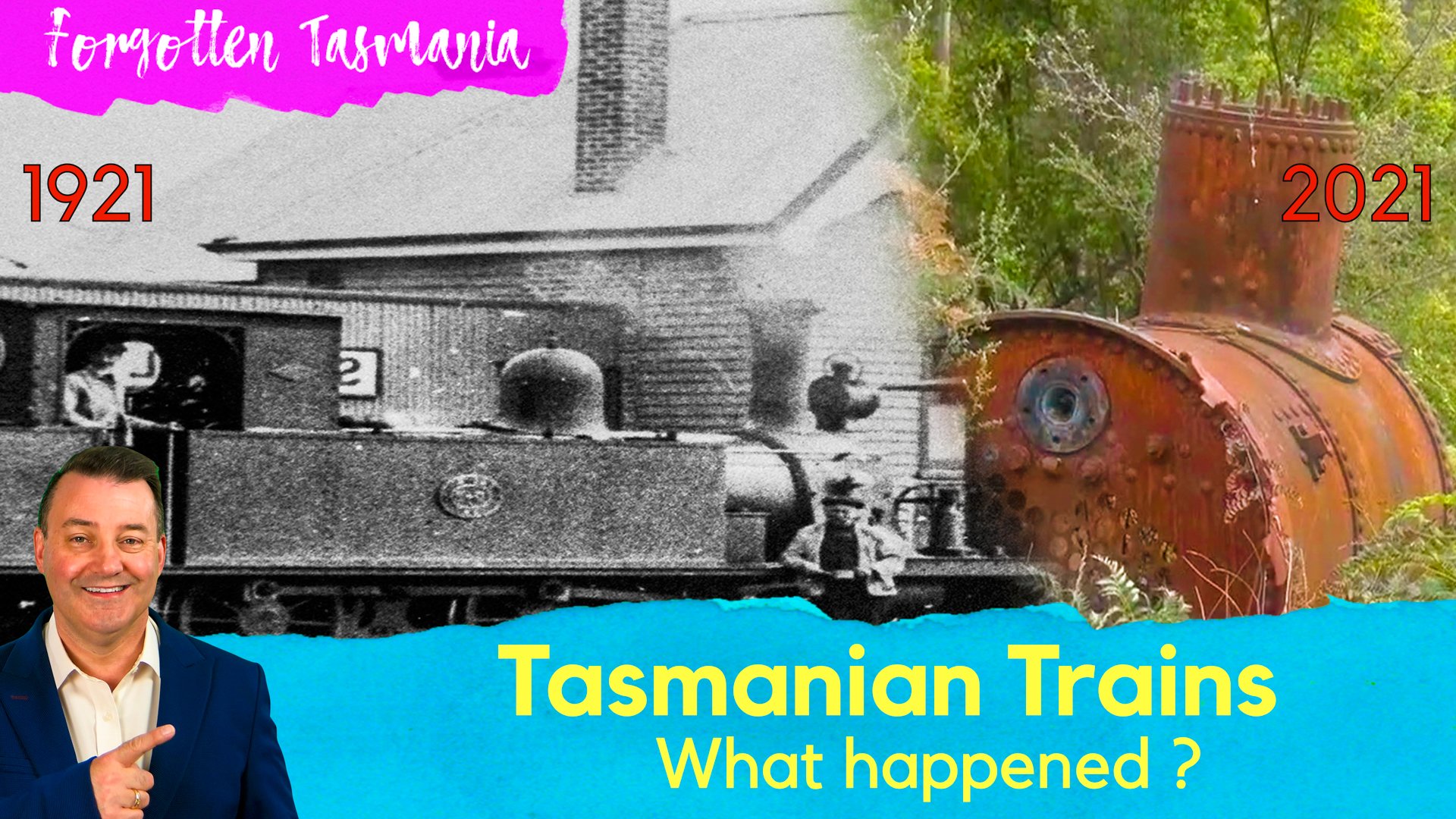Episode 302 - Tasmanian Trains
Where are they now?
I started this episode with a question; What Happened to our trains?
I have lots of photos of trains in the Beattie’s Studio Collection (link www.Beattiesstudio.com/trains) and it randomly occurred to me that these things were massive pieces of steel machinery and surely, they didn’t just disappear? Even left to rust, there’d still be something left. My next thought was that Tasmania used to have a passenger rail system and today we are the only state with no passenger trains at all, outside of museums and tourist attractions, so I did some YouTube searches…
I wouldn’t have considered myself a train spotter, but I must admit that I got a bit addicted to Rail Media’s YouTube channel. ( https://www.youtube.com/channel/UCXS5qf8HRYXZip03lG695Gw) The videos have little or no narration, a bit of text at the beginning sets the scene and then it’s this addictive flow of beautifully photographed scenes. I’ll digress here and say that I’m also addicted to woodworking videos. Once I start watching something being built, I just can’t stop until the end. It’s very compelling storytelling in this age of distraction and short attention spans. I once watched 4 one-hour videos on making a sword by forging metal.
Back to the mystery of where Tasmania’s trains went and I think the best way to find out is to ask a fellow Tasmanian YouTuber. Rowan Kinnane makes the Rail Media videos to which I am so addicted. He’s also part of the Heritage Rail community and knows a lot of the people involved. As is the way with Tasmania, his father was at the public radio station that I worked for in the 80s and he lives close by. We hit it off right away and Rowan was very generous with his time and helped me make this video. We started in 2021, which was the 150th anniversary of rail in Tasmania, and of course, the Beattie’s Studio Collection easily goes back to 1871.
Rowan went through all the train photos in my collection and filled in a lot of missing information, including image 2160; a Beyer Peacock built CC class locomotive hauling a train up the Cadbury's branch line from the junction at Claremont. The location can still be made out today, you can also walk the formation all the way up to the chocolate factory and along the way you can still see concrete culverts at the bottom of the embankments.
(Google Maps photo of the location today, supplied by Rowan)
And that’s the thing, the stations and other evidence is still there. We’ve got tracks from Bridgewater to Hobart. They’re overgrown and unused, but we still have them. There’s locomotives in parks for kids to play on, we’ve got the Margate Train, Station Nursery, Station Antiques, but no passenger trains.
Photo 2163 is of a Q class locomotive in the old Hobart rail yard, it looks like the engine is fairly new as it still has the small peanut type whistle which was eventually replaced with a Nathan 3 chime whistle, these were much louder and one was fitted to the Derwent Valley Railway's H2 when it was working to Maydena during the early 1990's.
A mainline express hauled by the TGR A class locomotive. Behind the locomotive is possibly a BA class passenger coach from the late 19th century, followed by a 1922 ABL class coach, the third is a 1928 AAL class and finally a DDB class guards built in the first decade of the 20th century.
Only 1 of the A class locomotives survived into preservation. The Don River Railway acquired A4 from the Launceston City Park and it was transported by road to the Don River's Devonport base in the early 1990's but unfortunately the restoration progress was halted. It’s now under covers parked alongside the workshop shed at Don. I had to squeeze in between the fence and the loco to film it. There are some other parts stored further back in the yard. All the parts are there, they just need the volunteer boilermakers to finish vital work on other engines before than can concentrate on the restoration. It’s an ageing workforce, as those skills are not needed in modern railways. With less and less qualified boilermakers left, they are a skilled resource in short supply. Attracting and training them is a priority for the not-for-profit organisation.
The other locomotive is the R class streamlined engines but sadly none of these were preserved, however there is a replica which has been made in HO scale and it is on display at the Tasmanian Transport Museum. We could feature it as it’s a scaled down version of the real engine and carriages, and it shows the colour scheme that these engines were painted it.
Heavy freight Locomotive Q9 at Hobart yard early 1930s. The TGR Q class 4-8-2 locomotive was introduced in 1922. Perry Engineering in South Australia, Walkers Engineering in Queensland and Clyde Engineering in NSW combined to produce 19 locomotives in this class. They were withdrawn from service in 1963, only 1 still exists, Q5, is preserved and it can be found on static display at the Tasmanian Transport Museum.
A number of these rail cars survived into preservation and during the TGR era they were converted from steam to passenger carriages in 1960 and withdrawn in 1978. One is based at the Don River Railway and another at the Tasmanian Transport Museum which brings out carriage SP4 during their regular steam days. They’ve been limited to the short piece of track on the site, as the State Government had required them to have millions of dollar’s worth of public liability insurance before they could run on the dis-used line just outside their gate. That type of insurance costs more than a small, volunteer organisation can possibly afford, so they’ve been grounded for a while.
This is the Royal Train and we found that at the Don River Railway.
Train derailment 1893. Tasmanian Main Line at Rogerville (between Bridgewater and Brighton). It's Crooked Billet Creek which runs off the Jordan River nearby. There was originally a wooden trestle bridge before it was destroyed by fire in 1899. After that, it was replaced by a deep embankment which is still used by the railway today. The train derailment was in 1893. Upstream from the (then) bridge was the site where the old main road (Midland Highway) crossed the gully by means of a unique stone bridge called the Horseshoe bridge. This old bridge was obliterated by highway widening works and when the highway bypassed the Crooked Billet Inn site in around 1974.
The Sorell to Bellerive railway is a fascinating story. I’d love to see a video tracing the path of the tracks around Pittwater and Barilla Bay (the causeways not being built then?) and through the tunnel. At the time it was built, people wrote articles in the newspaper joking about the size of the train. But it served well and I haven’t come across anything saying there were accidents. My opinion is that it was the little train that definitely could.
A diminutive Dübs 4-4-2T Tank Engine with quaint four wheel passenger carriages classes, A+, B+ and D+ about to leave Sorell over a century ago.
Unfortunately, all of the locomotives from the Sorell Line were scrapped but there are a few remains of these locos in the south of the state. Part of the boiler barrel from D+2 is beside the main road coming into Southport and the smoke box door is on display at the Tasmanian Transport Museum.
My amazing step-mother-in-law, Dorothy Crocker is a historian specialising in the Dover/Southport area. She came to light with an article on the sawmill at Southport. They used the old locomotive’s engine as part of timber operations at Southport. There is even a map showing the locations. So I headed out there with my 3D camera and drone and sure enough it was right where she said it would be.
The thumbnail shot for this video is the old boiler barrel and the original locomotive outside the Sorell Station.
Sorell Station Antiques is housed where train station used to be and a model of the train exists in the Mitre 10 store. Both of these are shown in the video.
If you want the full story on why Tasmania lost passenger trains, I’d suggest Tony Coen’s book “150 years of railways in Tasmania”. A lot of train enthusiasts blame the motorcar, but the story is more complicated than that. Our railways got bounced from private to State Government, to Federal Government and back to private hands again. No one could make them profitable in the long term. Our small population and the high cost of establishing and running a comprehensive rail network, just didn’t add up. No one considered the social, environmental, and economic side effects, today called the flow-on effect. That term is used to justify subsidies for other industries. My over-developed sense of fair play goes crazy at that one.
Our trains got relegated to Heritage Rail. But Tasmania is spoiled for choice in that area. Trains are awesome and they shouldn’t be just for holidays. With the public liability insurance issue now looking sorted, it’s a great time to get out and see these historic trains. The Don River Railway has 4km of track, so that’s the best place to catch a ride. The West Coast Wilderness Railway is a unique experience with the ABT sprocket system helping the train up the steep mountain slopes. The Tasmanian Transport Museum in Glenorchy has a great collection of different types of transport, such as trams, trolley busses, the old green busses we went to school on and of course the last examples of some really interesting locomotives and carriages. And there’s more Heritage Rail and Steam out there; Launceston, Sheffield etc etc.
I made more than a friend while making this episode, I gained an appreciation for the sheer scale of these magnificent machines. Our family lore has us related to George Stephenson, although I have not found the connection on Ancestry as yet, so it might be apocryphal. I do hope you enjoy the episode, I had fun making it.
References
Rowan did all the research for this episode. I found the photos and Rowan figured out which train it was, where it was photographed and what, if any, of the same class survived in Tasmania. He tracked them down and arranged access for me to film them and when I couldn’t get to the locations, he filmed them for me. I seriously could not have made the episode without him, and I thank him for the generous gift of his time and energy.
Rowan Kinnane – Rail Media
https://www.youtube.com/channel/UCXS5qf8HRYXZip03lG695Gw/featured
Don River Railway
https://donriverrailway.com.au/
Tasmanian Transport Museum
https://tasmaniantransportmuseum.com.au/
And there are several other excellent heritage rail organisations in Tasmania. I just didn’t get to them personally for this episode, but I wouldn’t want anyone to forget them. Heritage rail provides the only passenger services in Tasmania.
Although I didn’t actually refer to it because I had access to Rowan, this book is the definitive reference in my opinion.
150 Years of Railways in Tasmania
Lou Rae & Tony Coen
ISBN:978-0-6489762-7-1












